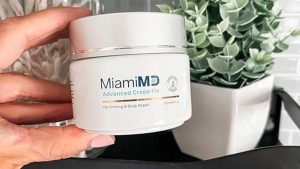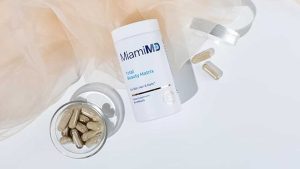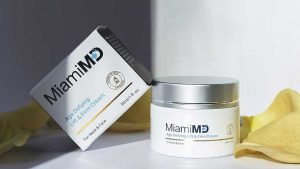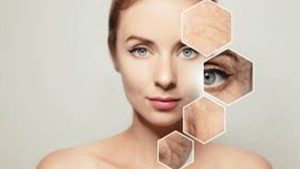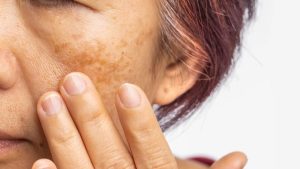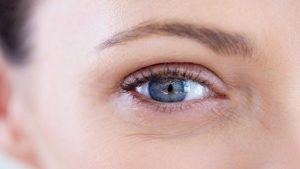Glycolic Acid Face Wash: Tips & Advice

Have you been considering the use of a glycolic acid face wash? Or are you just wanting a little bit more information about what they are and how they may be able to help you?
Miami MD has a basic primer on glycolic acid and how its inclusion in face washes, and other skin care products can make a difference in the appearance of your skin.
What Are Hydroxy Acids?
If you don’t know much about skin care products, the idea of putting an “acid” on your skin likely seems like a scary proposition.
To really understand what glycolic acid is and how a glycolic acid face wash can be effective, we have to pull back just a little bit further and look at the concept of hydroxy acids.
Hydroxy acids are a group of organic acids that have one (or more) “hydroxyl” groups that attach directly to the carbon chain on one or two carbon atoms (the aliphatic carbon atom or the alicyclic carbon atom). They can occur naturally as they do in plants like tomatoes and sugar cane, or they can be manufactured synthetically.
When it comes to skin care products, hydroxy acids as a whole are used to help perform a few different functions – they can brighten, firm, tighten, and smooth the skin.
In general, hydroxy acids work by helping to loosen the bonds between dead skin cells (the cellular “glue”) so that those cells can be swept away via exfoliative skin care products.
With less dead skin cells sitting on the skin’, the healthier, more radiant skin underneath can shine through.
Hydroxy acids come in various concentrations, with the higher concentrations only allowed to be used by medical professionals (as they impact not only the top layer of the skin — the epidermis — but can also penetrate the middle label – the dermis).
They also are broken into three different categories:
- Alpha hydroxy acids (AHAs)
- Beta hydroxy acids (BHAs)
- Polyhydroxy acids (PHAs)
Alpha Hydroxy Acids
The categories of hydroxy acids are all more or less the same in terms of how they work and the results that they can produce. The major difference is what they are soluble in. AHAs are water-soluble, while BHAs are oil-soluble — making them better for people with naturally oily skin).
In addition to glycolic acid, other forms of AHAs include lactic acid and citric acid. Salicylic acid, on the other hand, belongs to the beta-hydroxy acid category.
What Is Glycolic Acid?
Glycolic acid is one of the better known AHAs, as well as one of the most studied. It is actually derived from sugar cane, and many dermatologists consider it to be one of the best performing acids for skin.
In addition, glycolic acid is also the smallest, which allows it to more deeply penetrate into the pore and clear out all the debris. In fact, some of the studies done on it show that it may even be able to penetrate its way down into the dermis.
That’s an important selling point of glycolic acid because of the natural processes it can trigger. When it is able to penetrate deeply enough, it can stimulate the production of collagen synthesis.
If you’re at all familiar with the structure of the skin, collagen is one of the parts that keeps the skin looking firm and prevents it from sagging and developing fine lines and wrinkles for as long as possible.
The more collagen that you have in your face, the more youthful it will look and feel. Collagen production is one reason why glycolic acid is so great for anti-aging, but that’s not where the benefits stop.
Here is just a short list of the many benefits that glycolic acid boasts, most of which have been researched by dermatologists in great detail.
- Reduction of visible fine lines and wrinkles
- Decreasing the size and visibility of pores
- Helping to remove dead skin cells and brighten the appearance of the skin
- Decreasing the likelihood and severity of acne breakouts
- Evening out the skin tone
How Can I Use Glycolic Acid?
With all of the benefits of glycolic acid, how can you best implement it into your daily skin care routine? The great news is that there are multiple ways that you can make glycolic acid part of your life.
In fact, nearly every product designed for the skin (and even for the hair) has options that include glycolic acid as a main ingredient. This includes things like toners, creams, peels, and cleansers/face washes, like we’ll be discussing more today. In general, the percentage of glycolic acid that can be found in over-the-counter skin care products is usually between 4% and 10%.
When it comes to glycolic acid face washes, their main benefit is their ability to help promote anti-aging properties. They can also help open up closed pores, helping to reduce the likelihood and severity of acne and blackheads.
If you want to amplify the benefits of using a glycolic acid face wash, follow up your skin care routine with a cream designed to continue those anti-aging benefits.
Miami MD’s Age-Defying Lift & Firm Cream, designed by a double Ivy League-educated, world-renowned dermatologist, is a great option.
It helps restore firmness to the skin, as well as increases both volume and elasticity. This not only helps transform loose, sagging skin but also helps return it to that radiant, beautiful honeymoon glow. It can also be used on the jaw and neck, showing visible signs of aging that can lead to self-consciousness.
Who Can Benefit From Using A Glycolic Acid Face Wash?
While most anyone can get some advantage out of using a glycolic acid face wash, there are certain skin types that can get the most benefits from them.
For instance, although this may sound counterintuitive, people who have a naturally dry skin type may get added benefits from products including glycolic acid. While it does reach into the pores to help break those bonds between dead skin cells, it also attracts added moisture to the skin.
After attracting moisture, it also helps prevent water loss from inside the body. In addition, it increases the level of hyaluronic acid in the skin, which binds collagen to water molecules to help hydration remain inside the skin.
Another advantage of glycolic acid and AHAs, in general, is that they are safe to use in pregnancy, unlike BHAs and other skin care ingredients that claim to do similar things. That is a huge benefit for pregnant people who have issues with their skin, because you shouldn’t have to give up having beautiful skin while you’re pregnant.
Are There Any Drawbacks of Using Glycolic Acid?
While glycolic acid face washes are incredibly useful for all types of different skin types and issues, there are a few drawbacks to be aware of.
One of those drawbacks is that, unlike many other cleansers, glycolic acid face wash is not thick enough to be very efficient at removing makeup from the skin. What that means for you, if you’re a regular makeup wearer, is that you need to add an additional step into your nighttime routine.
Makeup remover or micellar water works equally well and should be done before cleansing to make sure the face wash can penetrate as deeply as possible into the skin. You’ll also want to let the skin dry before cleansing, as glycolic acid face washes are best when used directly on clean, dry skin.
Another potential drawback of any glycolic acid product is related to the reason that it is so efficient is the size. While its ability to penetrate deep into the pores is what makes it so incredibly potent, that can also make it irritating to the skin.
Sensitive skin can be especially vulnerable to redness, peeling, flaking, and even crusting and burning. Some people may even experience blistering or scarring, but that is more likely to happen in those with a skin allergy that they were unaware of or who start higher percentages without working up to them. If you know you have naturally sensitive skin, start with a glycolic acid percentage of no more than 5%.
In Conclusion
Miami MD wants you to know all of your available options when it comes to keeping your skin as youthful and radiant as possible.
Instead of trial and error, go to a product like a glycolic acid face wash that has been proven safe and effective. When you use the right products and take care of your skin the right way, you may even be able to turn back the clock, at least a little bit.
Sources:
